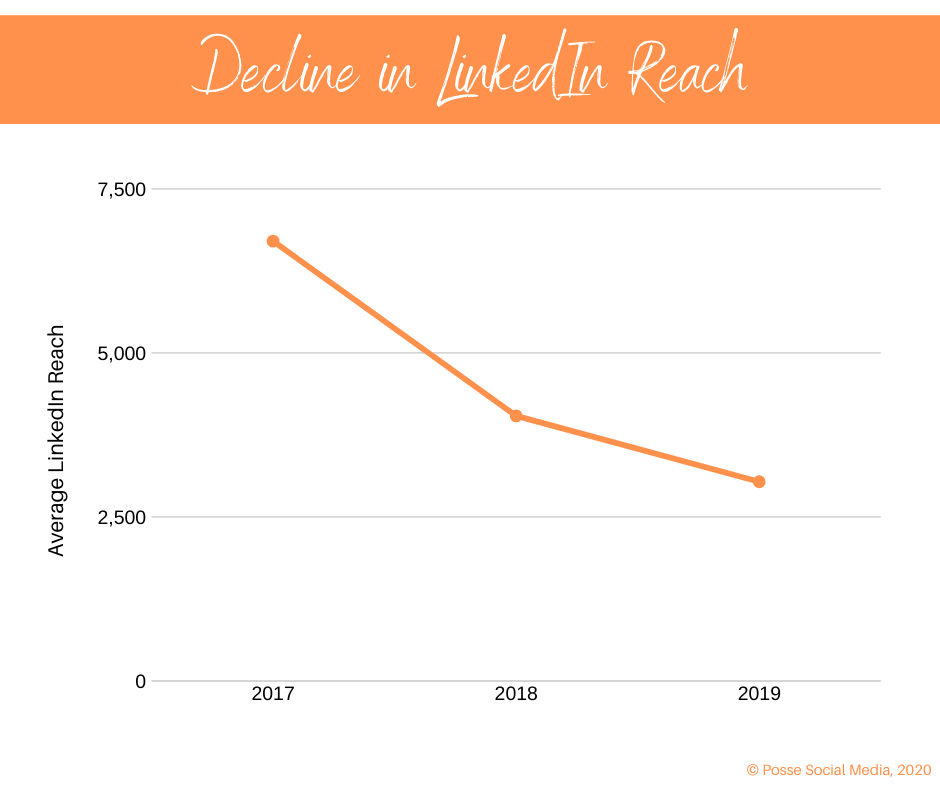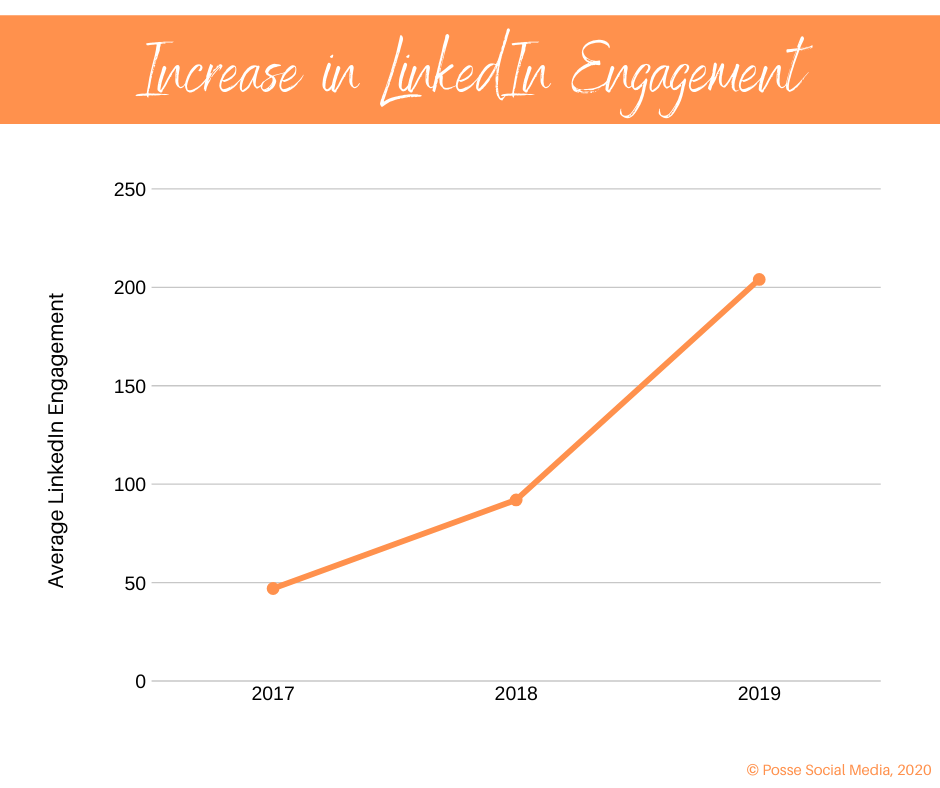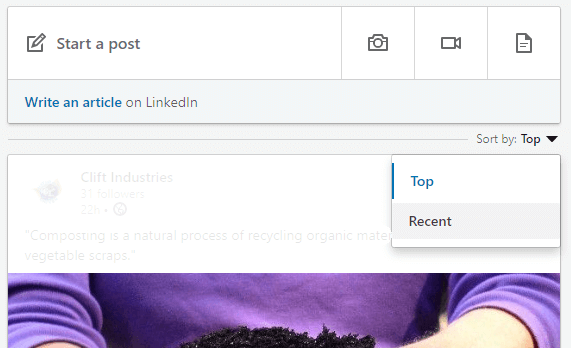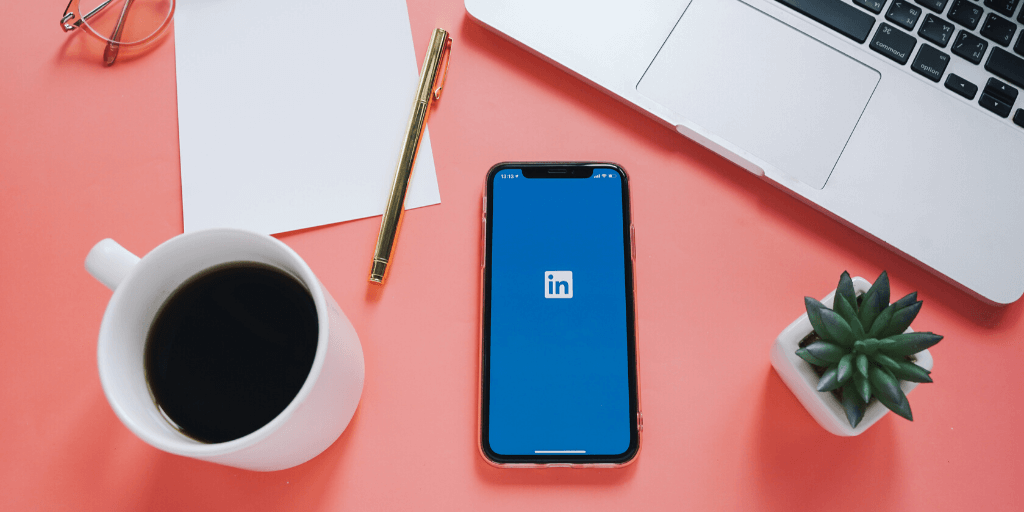In our last three blogs in this series, we looked at the declining organic reach on Facebook, Instagram, and Twitter, and outlined ways to combat the overall decrease in reach each platform is seeing. For our final blog in the series, we’re going to take a look at LinkedIn, a social networking site that has always been a little bit different from the rest.
LinkedIn’s History
The career-oriented networking site was launched in 2003 but saw very slow growth until 2007. By 2011, it boasted more than 100 million members worldwide. Microsoft bought LinkedIn in 2016, and by the following year, it reported more than 500 million members.
In 2018, LinkedIn began seeing “record levels” of engagement but discovered one big problem that motivated them to change their algorithm: engagement metrics were largely skewed towards only the top users on the platform.
“More and more people are using the feed and giving feedback to their network’s posts: our members generate tens of millions of viral actions (likes, comments, and reshares), and the number is increasing more than 50% YoY. However, we found that these increases weren’t equally distributed. In fact, at the beginning of 2018, we were in danger of creating an economy where all the gains in viral actions accrued to the top 1% power users, while the majority of creators who don’t receive much feedback were receiving less than ever.” -LinkedIn
Reach Versus Engagement
Unlike on the other platforms we’ve talked about in this blog series, we also have to dig into engagement rates on LinkedIn, rather than just reach. Reach refers to the number of people who see your content, while engagement refers to the number of social actions people have taken on a piece of content, such as likes, comments, or shares. After LinkedIn changed its algorithm in 2018, engagement on posts has increased, while reach has declined.
The following graph represents an account’s 54.6% decline in organic reach over a three year period.

This next graph shows the 334% INCREASE in engagement over the same 3-year period.

So, what gives? How can reach decline while engagement increase so drastically? It all comes back around to the algorithm.
Remind me again, what’s an algorithm?
Algorithms are calculations the platform uses to decide what content each user sees. It has replaced a chronological feed on every social media platform to date.
The Algorithm
Today’s algorithm, which ultimately determines which content is prioritized in user feeds and the amount of reach your content receives, is designed to generate more engagement for users.
LinkedIn’s algorithm has two primary goals: to prioritize relevant content and to promote engagement. Its aim is to show users content from people they actually know and content that relates to topics they are interested in.
By default, your LinkedIn feed is set to show you “Top” posts. You can, however, switch your feed over to “Recent” posts.

The algorithm’s 3 ranking signals clue us in as to why engagement is increasing while reach is not.
- It’s all about personal connections. The new algorithm gives more weight to personal connections. This is NOT accounts you follow, but rather, people you CONNECT with. LinkedIn determines which posts are most personally related to users by considering who you’ve interacted with directly and by analyzing profile information, like interests, skills, who users work with, etc.
- Is it relevant to a user’s interests? The algorithm measures a post’s affinity to someone’s interests through analyzing the groups they are in and what they follow (hashtags, people, and pages).
- What’s the probability of engagement? For this ranking signal, the algorithm will first evaluate the likelihood that you will engage (react, comment, or share) with a post based on content you’ve engaged with in the past and most frequently. Next, it takes into account the amount of time a posts rakes in engagement. The quicker a post garners engagement, the more likely LinkedIn will include it in others’ feeds.
Increasing Organic Reach
There are always steps you can take to help increase the organic reach (and engagement) of your LinkedIn posts. Here are a few to keep in mind.
- Relevancy
- Research your target audience to understand what kind of content they might find most relevant.
- Take a look at the format of your posts, too. Posts that include an image or a video will receive more engagement than posts with just text.
- Encourage Engagement
- Start a conversation with your posts by asking your audience to answer questions or share their insights and opinions.
- Hashtags
- Yes, you can use hashtags on LinkedIn! But be careful; LinkedIn recommends using no more than 3 relevant, niche (industry-relevant, not generic) hashtags on your posts.
- Timeliness
- As with any social media platform, you’re going to see the most reach and engagement if you post when your audience is online.
- Authenticity
- According to LinkedIn’s senior director of product management Pete Davies, “Genuine conversation around real experiences spark better and deeper conversation.”
- Avoid corporate jargon and use a brand voice that is friendly, approachable and personal.
Don’t Rely on Organic
Of course, no social media strategy is complete without a social ad budget. LinkedIn ads offer brands and businesses the opportunity to run campaigns with the goals of brand awareness, lead generation, and engagement. Check out Hootsuite’s guide to using LinkedIn ads for more info.
Have you noticed a decline in reach on your social media platforms or are your numbers holding steady across the board? Do you have questions about using social media to grow your business or what more information about the services we offer? Let us know!

